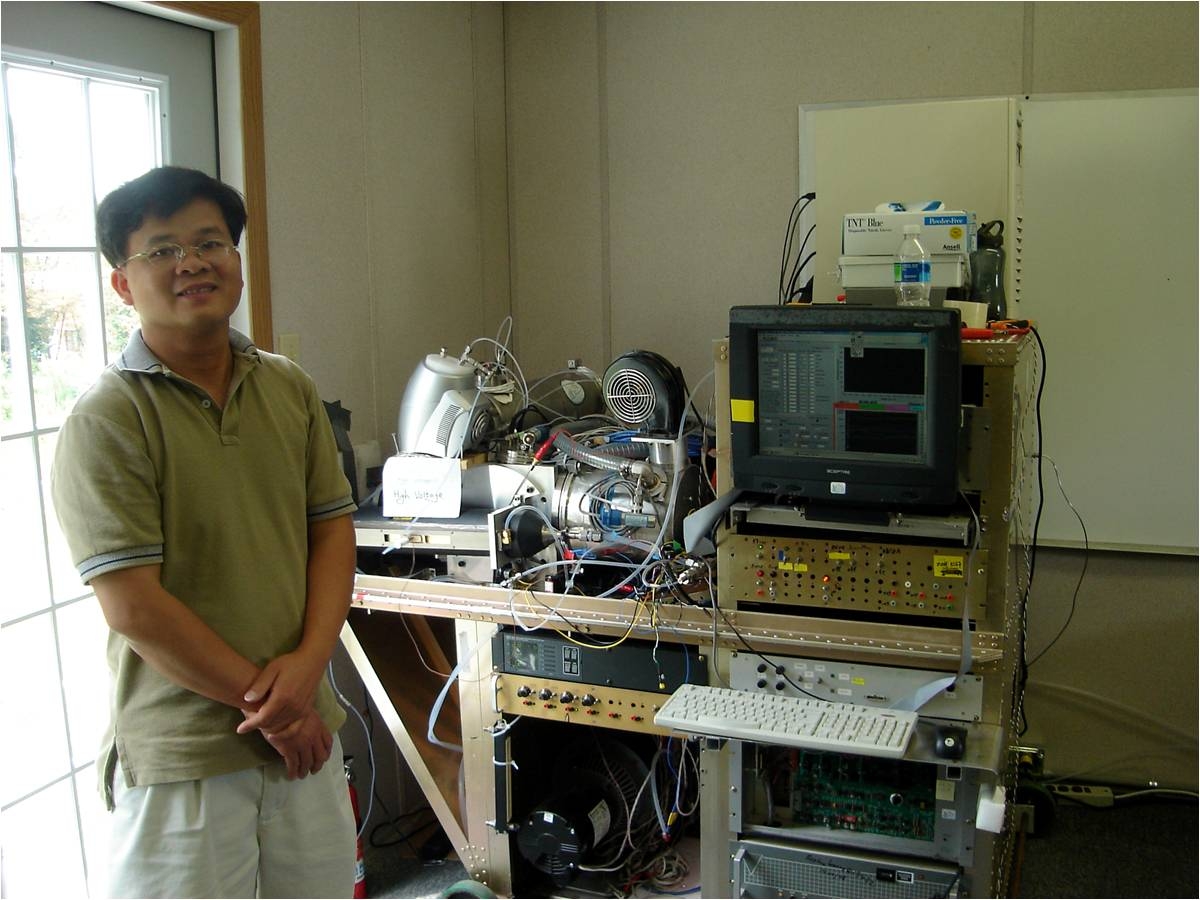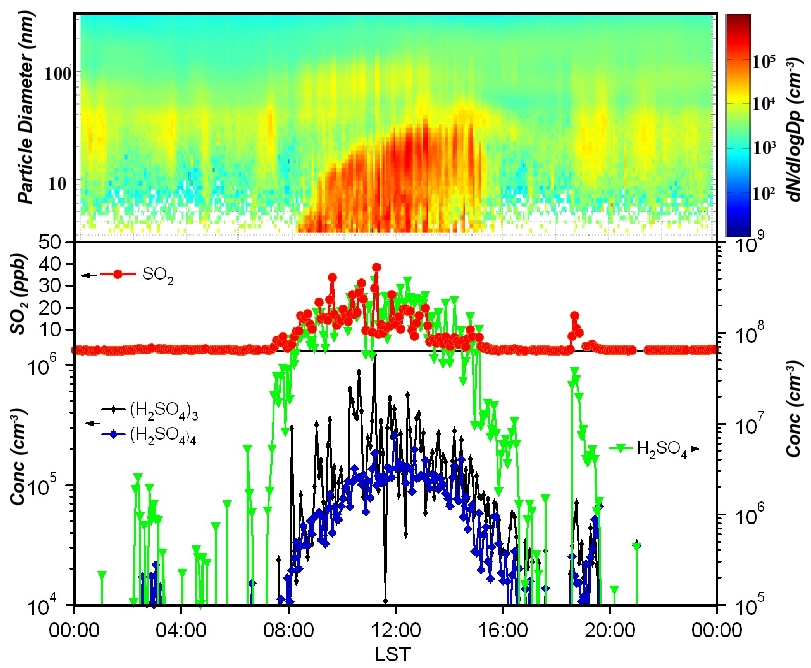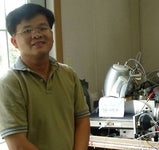First direct observations of sulfuric acid clusters associated with atmospheric nucleation
The production of new particles following atmospheric nucleation is a frequently-observed, worldwide phenomenon. Nanoparticles produced by atmospheric nucleation can subsequently grow to become cloud condensation nuclei (CCN) within one or two days and hence affect cloud formation, precipitation, and atmospheric radiation budgets. Bridging between molecules and nanoparticles, neutral molecular clusters are believed to play an important role in boundary layer nucleation process. Knowledge of chemical composition, concentrations, thermodynamic properties, and evolution of neutral molecular clusters is essential to better elucidate the boundary layer nucleation mechanism and to reduce the uncertainty in nucleation rates used in global climate models.
For this purpose, ACD scientist Fred Eisele and postdoctoral fellow Jun Zhao recently developed a highly sensitive mass spectrometer, the Cluster CIMS, capable of measuring neutral molecular clusters in the atmosphere (Figure 1, [Zhao et al, 2010]). The instrument is a variation of Selected Ion Chemical Ionization Mass Spectrometry (SICIMS), a technique developed by Eisele and colleagues [1993] for measuring key trace gases known to be involved in the nucleation process such as sulfuric acid and methane sulfonic acid. The Cluster CIMS also evolved from laboratory techniques developed in ACD for mass identifying sulfate clusters [Eisele and Hanson, 2000; Hanson and Eisele, 2002].

Figure 1. Dr. Jun Zhao and the Cluster CIMS measuring molecular clusters at the EPA supersite in midtown Atlanta, Georgia during the 2009 Nucleation and Cloud Condensation Nuclei (NCCN09) study.
Working closely with researchers from Prof. Peter McMurry’s laboratory at the Univ. of Minnesota, Zhao calibrated the Cluster CIMS using an electrospray coupled to a high resolution differential mobility analyzer (ES-HDMA). Those tests confirmed a relatively linear response over the range of mass-to-charge ratios from 190 to 400 Th, which allows for the quantification of singly-charged clusters containing 2-4 sulfuric acid (H2SO4) molecules. The team also explored methods for separating targeted chemically ionized neutral clusters from unwanted charged clusters that form inside the ionization source of the instrument. They successfully demonstrated that charged clusters forming inside the ion source can be identified and subtracted from the overall cluster distribution by employing a technique that measures the cluster distribution as a function of the residence time within the ion source. The result: the first reported measurements of the distribution of sulfuric acid clusters in ambient air.
So far, the Cluster CIMS has successfully performed measurements in three locations: outside the ACD laboratory in Boulder, Colorado; at the NCAR BEACHON Manitou Forest Observatory (a Ponderosa pine forest in Woodland Park, Colorado); and in midtown Atlanta, Georgia, during the Nucleation and Cloud Condensation Nuclei 2009 (NCCN09) campaign co-organized by NCAR and the Univ. of Minnesota. At all of these sites, concentrations of 104-105 cm-3 molecular clusters containing 3-4 H2SO4 were observed. Figure 2 shows one example of Cluster CIMS measurements during a nucleation event in Atlanta during NCCN09. As the figure shows, sulfuric acid clusters are unambiguously associated with the new particle formation event (Figure 2, upper plot) that began at 8:00am and ended at 4:00pm local time. Measurements such as these provide the first direct observations of the species involved in nucleation, and are currently being used to develop a predictive module for nucleation that can be incorporated into regional and global models.

Figure 2.The particle size distribution (top) (measured by Prof. Peter McMurry’s group, University of Minnesota) and the concentrations of the clusters (up to tetramers), monomer, and SO2 on August 23, 2009 during NCCN09.
References
Eisele, F. L., and D. R. Hanson (2000), First measurement of prenucleation molecular clusters, J. Phys. Chem. A, 104(4), 830–836, doi:10.1021/jp9930651.
Eisele, F. L., and D. J. Tanner (1993), Measurement of the gas-phase concentration of H2SO4 and methane sulfonic acid and estimates of H2SO4 production and loss in the atmosphere, J. Geophys. Res., 98(D5), 9001–9010.
Hanson, D. R., and F. L. Eisele (2002), Measurement of prenucleation molecular clusters in the NH3, H2SO4, H2O system, J. Geophys. Res., 107(D12), 4158, doi:10.1029/2001jd001100.
Zhao, J., F. L. Eisele, M. Titcombe, C. Kuang, and P. H. McMurry (2010), Chemical ionization mass spectrometric measurements of atmospheric neutral clusters using the cluster‐CIMS, J. Geophys. Res., 115, XXXXXX, doi:10.1029/2009JD012606. In press.
